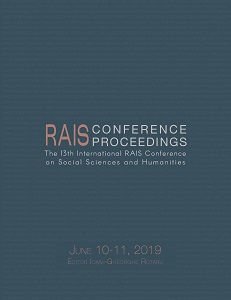The Impact of Internal Communication in Organizational Management
The Impact of Internal Communication in Organizational Management
Author(s): Maria Daniela Pipaş, Camelia Lucia Bakri
Subject(s): Business Economy / Management, ICT Information and Communications Technologies
Published by: Scientia Moralitas Research Institute
Keywords: internal communication; management; managers; efficiency; organization;
Summary/Abstract: Modern society represents a set of organizations. Almost all aspects of human existence are regulated, assisted or facilitated by an organization or another. Almost all people are part of the structures and processes of a type of organization, be it family, school, government, church, business or club. According to a simple definition, an organization is the combination and use of human, financial and material resources to achieve objectives. The organization is a social system composed of activities that brings together human and material resources, through which the objective for which it was created is achieved: products, works, services appropriate to social order. The organization is not defined only by its products and/or services, but also by the manager's ability to communicate with employees and the management team. All activities related to the organization are mediated by communication, so communication is a key element in the organizational processes, interfering with their success or failure. Communication is one of the most important organizational activities. Fundamentally, human relations grow out of communication and the functioning and survival of organizations is based on effective relationships between individuals and groups. Moreover, organizational capabilities are adopted and developed through intense social and communication processes. Internal communication, seen as a set of procedures and organized communication exchanges, participates in the construction of numerous definitions of problematic situations underlying the understanding and behavior of employees. Every organization has its moments of glory and decay in functional and communicative terms. It is very easy to go from an effective communication situation to a poor one, given the multitude of factors that can disrupt the flow of information and communication of a group or of an organization. Like any activity that takes place within the organization, communication must have a planned dimension; it cannot be done randomly, but requires a plan, a strategy, rules and procedures. In other words, communication must be institutionalized and incorporated into the strategic plan of the organization. Communication is specific to each organization; each organization has its own communication system based on the profile, size and especially the organizational culture.
Book: Proceedings of the 13th International RAIS Conference on Social Sciences and Humanities
- Page Range: 162-167
- Page Count: 6
- Publication Year: 2019
- Language: English
- Content File-PDF

